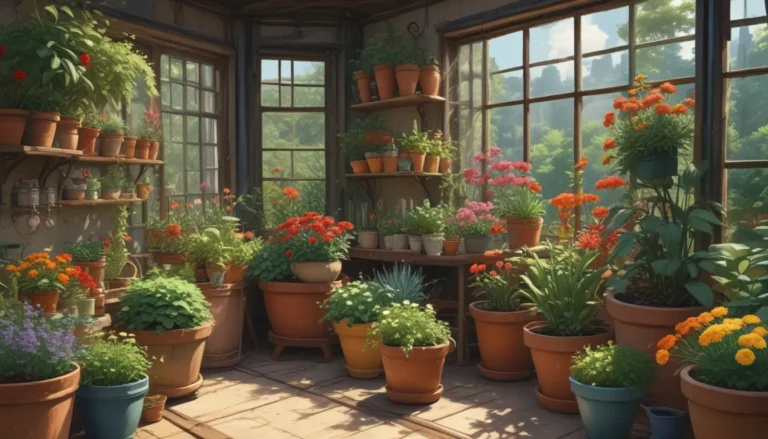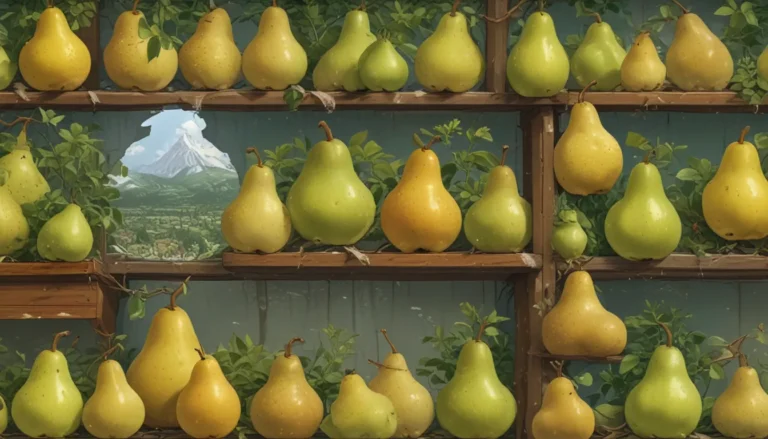Protecting Your Camellias: A Comprehensive Winter Guide

Winter landscapes can often seem dull and dreary, but a pop of color from a flowering camellia bush can instantly lift your spirits. Camellias not only add beauty but also serve as vital sources of pollinator forage during the colder months when most plants are dormant.
While camellias are known for their cold tolerance and ability to bloom through light frost or snow, they still need protection from extreme cold and harsh winter conditions to thrive.
In this comprehensive guide, we will delve into how you can protect your beloved camellias and ensure they survive and flourish through the winter months.
What You’ll Learn
- Why Do Camellias Need Winter Protection?: Discover the origins of camellias and why they require protection during winter.
- Tips for Outdoor Winterizing: Learn essential techniques to safeguard camellias planted outdoors.
- Moving Potted Camellias Indoors for the Winter: Explore strategies for caring for potted camellias during the winter season.
Why Do Camellias Need Winter Protection?
Camellias have a rich history dating back thousands of years, originating from various parts of Asia. They have been treasured for their beauty and cultural significance, especially in countries like China and Japan where they are integral to religious practices and royal ceremonies.
While many camellia varieties are cold hardy or tolerant, they can still be susceptible to damage from extreme cold temperatures and harsh winds during winter.
If you opt to grow camellias in containers, you must ensure they are not subjected to dry or excessively warm indoor conditions, as this can harm the plants.
To help your camellias survive the winter, it is essential to take proactive measures and plan ahead. Let’s explore the best methods to protect your plants during the colder months.
Tips for Outdoor Winterizing
- Choose the Right Variety: Select camellia varieties that are suitable for your region’s winter conditions.
- Protect from Cold Winds: Plant camellias in a sheltered location to shield them from harsh winds.
- Avoid Late Fertilization: Refrain from fertilizing your camellias late in the summer or fall to prevent new growth that can be damaged by winter weather.
- Encourage Dormancy: Allow your plants to naturally enter dormancy as temperatures drop, as dormant plants are more resilient to winter conditions.
- Deep Watering: Water deeply before freezing temperatures set in to help insulate the roots.
- Mulch Application: Apply a thick layer of mulch around the base of the plants to insulate the roots. Use shredded wood or straw mulch for optimal aeration.
- Winter Wrapping: In regions with freezing temperatures, wrap your shrubs in horticultural fleece, burlap, or bubble wrap for additional protection.
- Pruning: Trim any dead or discolored foliage in spring to promote new growth.
Remember, it is essential to monitor your camellias throughout the winter and adjust your protection strategies as needed.
Moving Potted Camellias Indoors for the Winter
If you reside in an area with extreme winter conditions, growing camellias in containers allows you to move the plants indoors when necessary. Here are some tips for caring for potted camellias during the winter:
- Temperature Tolerance: Most camellia varieties can tolerate temperatures between 10 to 90°F. Consider the cold hardiness of the specific variety you are growing.
- Moisture Management: Water your potted camellias well before the onset of freezing temperatures to help insulate the roots.
- Maintaining Dormancy: Expose the plants to falling temperatures to signal dormancy, but avoid sudden shifts to warmer indoor environments.
- Indirect Light: If moving potted camellias indoors, place them in an unheated garage or shed with indirect light to prevent stress.
When transitioning potted camellias back outdoors in spring, gradually acclimate them to the outdoor environment to prevent shock.
By following these guidelines, you can ensure that your camellias remain healthy and vibrant throughout the winter season.
Conclusion
Protecting your camellias from winter cold damage is crucial to their survival and continued growth. With the right strategies and proactive care, you can shield your plants from harsh winter conditions and enjoy vibrant blooms when spring arrives.
Establishing a winterizing routine for your camellias will become easier with time, and your efforts will be rewarding when you see your plants thriving. Remember to share any winterizing tips you have in the comments below to help fellow gardeners prepare their plants.
For more information on growing and caring for camellias, explore topics such as troubleshooting tips for container-grown camellias, propagation techniques, identifying leaf gall issues, and selecting companion plants.
Investing time and effort into protecting your camellias during winter will ensure they offer a stunning display of color and beauty in your garden for years to come.





